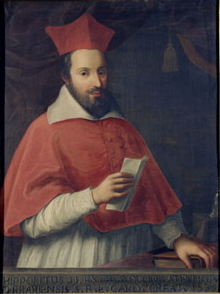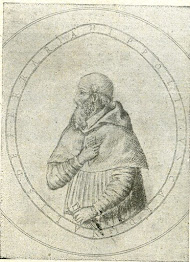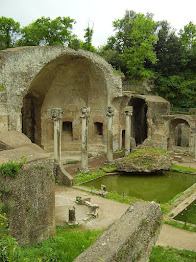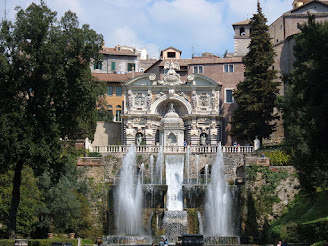Borgia prince enjoyed the good things in life
Ippolito II d’Este, who became infamous for plundering Hadrian’s Villa to decorate his own home, was born on this day in 1509 in Ferrara in Emilia-Romagna.
Ippolito II d'Este plundered
the treasures of Hadrian's Villa
He was the second son of Lucrezia Borgia and her husband, Duke Alfonso I d’Este and therefore also a grandson of Pope Alexander VI. He was named after his uncle, Ippolito d’Este.
At the age of ten, Ippolito II inherited the archbishopric of Milan from his uncle, the first of a long list of ecclesiastical appointments he was to be given, which provided him with a good income. He was later given benefices in many parts of France from which he was also able to draw revenue and he was created a Cardinal by Pope Paul III before he had reached the age of 30.
A lover of luxuries and the finer things in life, Ippolito II had Palazzo San Francesco in Ferrara refurbished for himself. He also had a palace renovated to provide him with a sumptuous residence in Rome.
He became Governor of Tivoli in 1550 and had the Villa d’Este built there to a design by Mannerist architect Pirro Ligorio.
He became interested in the ruins of the Roman villas in Tivoli and carried out archaeological excavations.
 |
| Ippolito gave support to the composer Palestrina and others |
Ippolito II was ambassador on behalf of Ferrara to the French court and became Cardinal Protector of France during the reign of King Henry II of France.
He also helped to sponsor the work of Giovanni Pierluigi da Palestrina, one of the most important composers of sacred music of the Renaissance, and gave support to the sculptor Benvenuto Cellini and the poet Torquato Tasso.
Ippolito II died in Rome after a short illness in 1572. He was aged 63. He was buried in the Church of Santa Maria Maggiore in Tivoli near his villa.
More than 2000 of his letters and 200 of his account books have survived and are now kept in an archive in Modena.
The book, The Cardinal’s Hat: Money, Ambition and Everyday Life in the Court of a Borgia Prince, by Mary Holllingworth, was based on his letters and account books.
Travel tip:
A section of the ruins of
Hadrian's Villa at Tivoli
Hadrian’s Villa (Villa Adriano) is a large Roman archaeological complex at Tivoli, about 32km (19 miles) east of Rome, which is a designated UNESCO World heritage site. It is owned by the Italian Republic and is run by the Polo Museale del Lazio. It was built at Tivoli - then known as Tibur - as a retreat from Rome for the Emperor Hadrian in the second century AD. Hadrian is said to have disliked the palace on the Palatine Hill in Rome and the villa at Tivoli was somewhere he felt more able to relax from the demands of everyday life. During the later years of his reign, Hadrian actually governed the empire from the villa, which he adopted as his official residence.
Travel tip:
The Villa d'Este is notable for its complex of
more than 50 fountains and waterfalls
The Villa d'Este is a 16th-century villa in Tivoli famous for its terraced hillside Italian Renaissance gardens, often referred to simply as the Tivoli Gardens, and for its profusion of fountains, more than 50 in total. The nearby river Aniene was diverted to provide water for the complex system of pools, water jets, channels, fountains, cascades and water games. Canals were dug and 200 metres of underground pipes were laid. A Benedictine convent before Ippolito II d’Este confiscated it to develop as his residence, it is now an Italian state museum, and is listed as a UNESCO world heritage site.
Also on this day:
79: The eruption of Vesuvius that buried Pompeii and Herculaneum
665: The death of Saint Patricia of Naples
1609: Galileo demonstrates potential of the telescope










